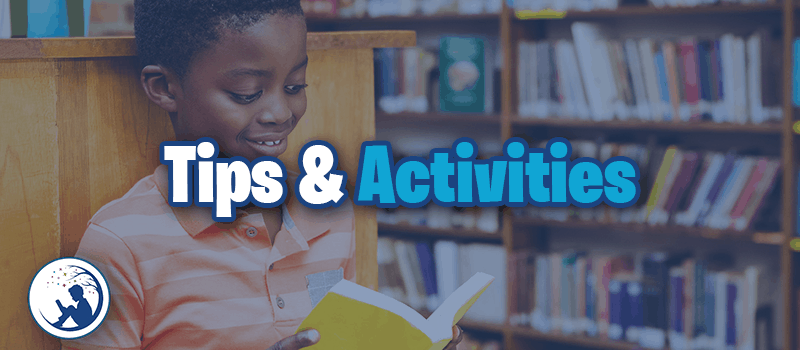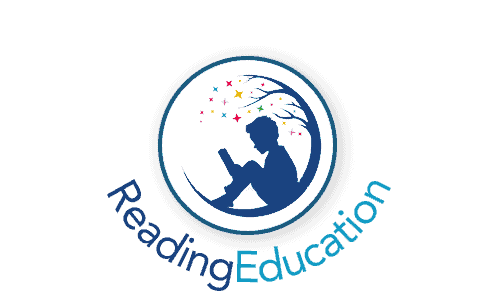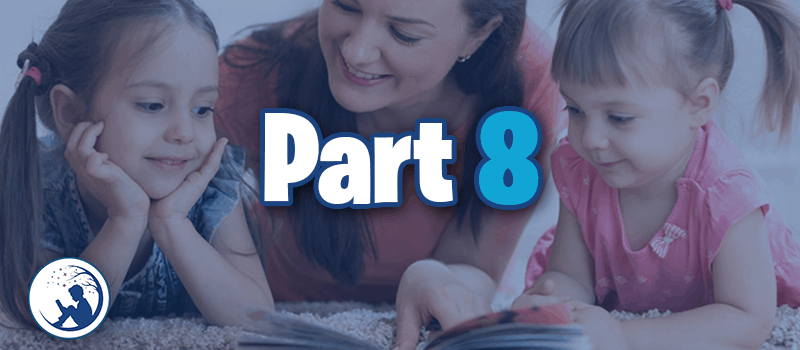Welcome to the eighth and final part of our ‘Teaching Your Child to Read Year-by-year’ series! In this set of articles, we’ll be looking at what your child will be learning at nursery or school and what you can do to further their reading skills at home. We’ll focus on eight age groups, which are as follows: Ages 3-4 years; ages 4-5 years, ages 5-6 years; ages 6-7; ages 7-8; ages 8-9; ages 9-10; ages 10-11. There will be one dedicated article for each age group, as well as links to all the other articles in this series to make navigation between articles as easy as possible (see the bottom of this page for links to other articles in this series).
Learning to Read: Children Aged 10-11 Years Old
At the ages of ten and eleven, your child’s reading abilities should allow them to read independently both at home and school. Although some children might be reluctant to expand their reading horizons and stick to what they know, i.e. a particular author of series of books, they should be encouraged to push boundaries and read new types of books.
At this stage of their learning, it is crucial that your child is encouraged to build a love of reading, as this will help to develop a robust foundation for learning throughout their schooling life and in later life.
What will your child be learning at school?
Learning about root words, suffixes, and prefixes. In preceding years, your child will have started to learn about suffixes (a set of letter added to the end of a word. For example, ness creates a noun. Happy turns into happiness); however, once they reach this stage of learning, they will be introduced to both root words and prefixes. The former – root words – are words that stand on their own with the need for either prefixes or suffixes; the latter – prefixes – are a set of letters added to the start of a word to make a new word. For example, ‘clean’ becomes ‘unclean’, with ‘clean’ being the root word. Your child will utilise their understanding of suffix, prefixes, and root words to help them figure out the meaning of words and how meanings change when suffixes and prefixes are added.
Reading and talking about a wide range of books. By the ages of nine and ten, your child will both listen to and read a wide range of books, poems, plays, and non-fiction when at school. Doing so will help them develop a preference for the type of text(s) they like to read and listen to. Expanding the scope of their reading allows them to become accustomed to different types of writing and language. It is also at this stage of their learning that your child will use reference books such as dictionaries and encyclopaedias on a frequent basis.
Recommending books to classmates and friends. A vital component of becoming a reader is having the ability to talk about the books you enjoy and why you liked reading them. Therefore, your child will be encouraged to discuss this with their classmates and friends, and make book recommendations to them.
Talking about and comparing themes in books. The ever-expanding number of types of books that your child is reading will allow them to compare books and think about similarities and differences between them. Furthermore, your child will be taught to recognise these In books and make connections between them.
Learning poems and play scripts by heart. In preceding years, your child will have studied (and potentially performed) play scripts and poetry. This will continue, but with more complicated poems and scripts. Tackling more difficult poems and plays will help your child to develop their reading expression and broader understanding of such pieces of literature. In some instances, your child might be expected to learn poems by heart and recite in front of an audience.
Reading between the lines and using evidence from the text to justify their thinking. At times, information in a book or text is clear and easily understood. However, many texts are typically a little more complicated and require some degree of inference to grasp what is being said. ‘Inference’ is when the author of a book leaves the reader to read between the lines to obtain some elements of information. Your child will need to make sense of details that aren’t explicitly stated. For example, instead of the text saying simply ‘It was raining’, it might say, ‘Michael shook the water from his brolly and carefully placed her soaking raincoat on the radiator’. Being able to read between the lines and make inferences is a vital skill for comprehension at this stage of learning.
Predicting what happens next. Your child will be asked to make predictions about the book, stories, and texts they read. This could involve predicting what will happen next or what a certain character might do or say. The reason for asking a child to do this is because it helps the teacher check their understanding of what is happening in the text.
Learning and identifying how the language and structure of text adds to and affects its meaning. By this stage of learning, your child will not only continue to develop their reading skills but also be asked to think about why a writer has made certain choices. They will read a wide array of texts and discuss how the words, the organisation of the text and how the text is presented create a particular effect. For example, this might be how an author shares information in a clear and concise fashion or how an author makes a specific scene comical.
Discussing how and why authors use language. Your child will start to learn about ‘figurative language’, i.e. figures of speech such as similes, metaphors, and analogies, that are used to go beyond the literal meaning of the text. For example, ‘The mountain was covered in a blanket of white’ as opposed to ‘the mountain was covered in snow’.
Figurative language adds zest to a piece of writing (which is excellent for your child’s writing skills) or helps them to ponder an idea in a different way. Your child will be taught the effects of figurative language on the reader.
Telling the difference between opinion and fact. The wide range of fiction and non-fiction your child will have read up to this point (including letters, newspapers, websites, adverts etc.) will help develop their analytical skills, i.e. differentiating between facts the writer’s opinion.
Reading Tips & Activities for 10-11 Year Olds

Here are some simple – yet handy – ways to help your child further develop their reading skills.
1. Encourage a wide range of books
Promote diversity in their reading by encouraging them to choose different types of books. Although most children will have a favourite genre, author or subject, make sure that they don’t neglect other types of books – even things like adverts, newspaper, and brochures can help to expand their reading comprehension by exposing them to real-word content and context.
2. Value their choices
By the ages of ten and eleven, it can be easy to fall into the trap of continually pushing your child to read more complex and wide-ranging texts – which is totally understandable; however, your child’s choices need to be taken into account and valued too. They might want to choose a book or sierras if books that their friends or classmates are reading, a favourite they’ve read countless times before, or merely something you don’t think is worthwhile. Either way, you should afford them the freedom to make the book choices they desire as this will help build their love and excitement for reading.
Of course, if they only want to read old favourites or books that don’t allow them to develop their reading skills further, some gentle persuasion to try new types of books is the best way to broach the subject. Try to achieve a balance between the two.
3. Audiobooks
Over the last several years, audiobooks have risen to prominence. With the sheer number of titles available, it’s a wise idea to have them available when your child isn’t able to read, doesn’t want to read or you’re unable to read to them. Although it will probably involve some screen time on a tablet or phone, it can be a great way to open your child’s mind to new language, words, stories, and information. Of course, everything must be done in moderation, but an audiobook before bed or in the car is a great way to boost your child’s development with little to no effort required.
4. Carry on reading to them
Although most children will prefer to read independently as this age, reading to them still has a myriad of benefits with regard to the development of their comprehension. Let’s take a look at why this is:
– Reading a story or non-fiction book to your child allows them to gain access to the books that are, at present, too challenging for them to read independently. Hearing ‘challenging’ texts will help to build their comprehension skills.
– If left to their own devices, your child might opt for similar books or texts to read. Although this isn’t necessarily a bad thing, opening up their minds to new types of texts, stories and styles of writing gives them the opportunity to hear new, unfamiliar language.
– Listening to a fluent reader will help your child to understand how expressions is used and, when reading, will encourage them to bring the words on the page to life!
– Reading with your child allows them to think about and discuss ideas and thoughts about the text, which help to develop their deep thinking and analytical skills.
5. Use Pictures
Although the use of pictures may seem a little long in the tooth by the time your child reaches the age of nine or ten (and perhaps a little ‘beneath’ them too), using pictures can still help to develop their reading skills. Discussing what might be happening in a picture, what certain characters might be feeling or thinking, or what might occur next in the story all help to boost reading comprehension.
6. Reading between the lines
Discussing poems, stories, and non-fiction books helps your child to understand different books in different ways. Remember, it’s not always about what happened on the book or who did what; there are often hidden messages or meaning that are less obvious that require analytical skills to figure out. Talking about texts can help to develop this skill.
Thank you for taking the time to read our blog; we really appreciate your time and hope you found this article informative and helpful. If you’re interested in reading the other posts in the ‘Teaching Your Child To Read Year-By-Year’ series, please use the links below:
Part 1 (Ages 3-4)
Part 2 (Ages 4-5)
Part 3 (Ages 5-6)
Part 4 (Ages 6-7)
Part 5 (Ages 7-8)
Part 6 (Ages 8-9)
Part 7 (Ages 9-10)
Thanks again for your time! If you have any comments, questions, or suggestions, please don’t hesitate to get in touch!

